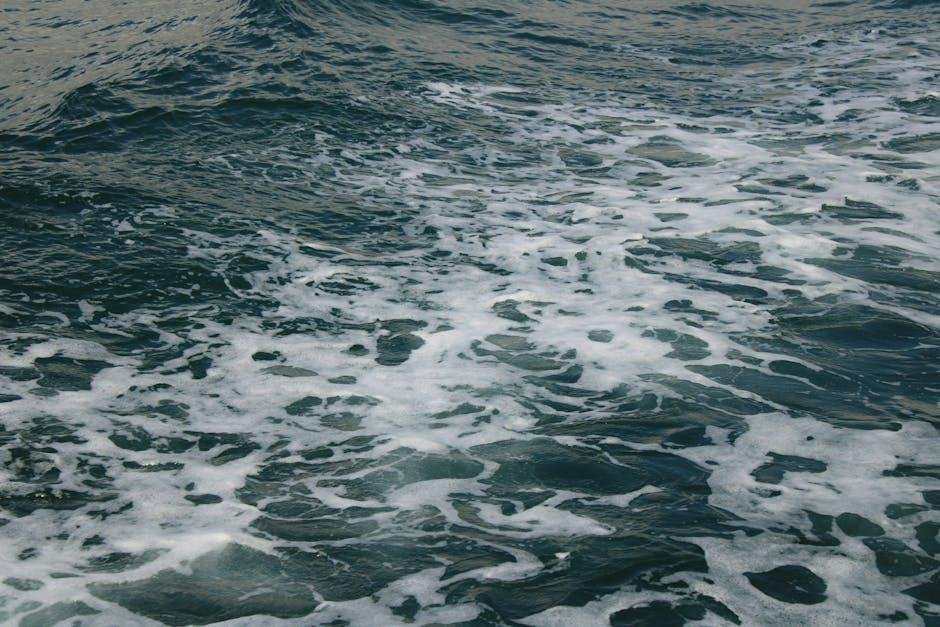As the sun rises and falls along the horizon, the dance of the tides unfolds, orchestrated by the gravitational embrace of the moon and the sun.This rhythmic movement of the ocean not only shapes coastlines but also influences countless aspects of our maritime adventures.From the gentle lapping of waves against the shore too the sudden emergence of sandbars, understanding the tides can be the key to unlocking the full potential of your trip. Whether you’re planning a leisurely day at the beach, embarking on a fishing expedition, or navigating thru the complex waterways of a coastal area, the ebb and flow of the tides can dramatically alter your experience. Join us as we delve into the captivating world of tides—exploring their science,their cycles,and most importantly,how they can impact your next oceanic journey.
Understanding Tidal Patterns and Their Influence on Coastal Experiences
tides are a fascinating natural phenomenon that significantly shape our coastal landscapes and experiences. Understanding them can enhance your beach visit, provide safety during water activities, and even influence wildlife encounters. Tidal patterns are primarily driven by the gravitational pull of the moon and the sun, affecting water levels and currents in notable ways. When planning your coastal adventure, consider these aspects:
- Low tide: Explore tide pools and marine life that are typically hidden under the water.
- High Tide: Engage in activities like swimming or kayaking with calmer waters.
- Timing: Check local tide charts to maximize your beach experience based on the best conditions.
Along with recreational elements, tides play a crucial role in local ecosystems. The rhythms of the tides facilitate the movement of nutrients and the spawning of various fish species, impacting fishing opportunities throughout the day. Local communities may also rely on tidal patterns for their livelihoods,with specific times being optimal for harvesting seafood. Here’s a simplistic view of how tides might interact with activities:
| Tide Phase | Recommended Activities |
|---|---|
| Low Tide | Beachcombing, tide pooling, and snorkeling |
| High Tide | Surfing, swimming, and sailing |

Navigating Activities: How Tides Dictate Timing and Locations
Understanding how tides fluctuate can significantly enhance your trip planning. Tides, influenced by the gravitational pull of the moon and sun, create a natural rhythm that can dictate when and where activities can take place. For instance, during low tide, some marine activities like sandbar exploration and tide pooling become popular, while high tide may be more suited for kayaking or paddleboarding. By paying close attention to tide charts, you can schedule your adventures around the peaks and troughs of the tide cycle, ensuring that you make the most out of your coastal experience.
Here are some factors to consider when planning your activities around tides:
- Timing: Check local tide tables regularly to know when low and high tides will occur.
- Safety: Be cautious, as strong currents and rapid tide changes can pose a risk, especially in certain areas.
- Exploration: Low tides frequently enough reveal hidden coves and new paths—keep an eye out for unique marine life!
- Scenic Views: Sunset and sunrise views can be particularly stunning at the water’s edge, so plan accordingly.
To give you a better understanding of how tides can vary in a specific locale, here’s a sample table of a week’s forecast:
| Day | High tide | Low Tide |
|---|---|---|
| Monday | 8:00 AM | 2:00 PM |
| Tuesday | 8:30 AM | 2:30 PM |
| Wednesday | 9:00 AM | 3:00 PM |
| Thursday | 9:30 AM | 3:30 PM |
| Friday | 10:00 AM | 4:00 PM |
| Saturday | 10:30 AM | 4:30 PM |
| Sunday | 11:00 AM | 5:00 PM |
By aligning your planned activities with these tidal times, you can ensure not only a safer experience but also a more enriching one, full of discoveries that change with each rise and fall of the ocean’s waters.

Safety First: Preparing for Tidal Changes on Your Journey
Planning for tidal changes is essential to ensure a smooth and enjoyable experience on the water. Tides can significantly impact your journey, altering coastlines and affecting travel routes. To prepare,it’s crucial to keep an eye on tide tables and weather forecasts for the areas you plan to visit. Consider the following tips:
- Check local tide schedules: Different locations may experience varying tidal patterns, so make sure to consult reliable tide charts for your specific destination.
- Plan your activities: Be mindful of when high and low tides occur; this will help you optimize your fishing, kayaking, or beachcombing experiences.
- Stay informed: Use apps and tools dedicated to marine forecasts to receive real-time updates on tidal changes and potential hazards.
Moreover, understanding how tides interact with local weather systems can help you make informed decisions. Certain factors can amplify tidal effects, such as storm conditions or seasonal variations, leading to unpredictable changes in water levels. To give you a clearer perspective, see the table below to grasp how different phases of the moon influence tides:
| Phase of the Moon | Tidal Effect |
|---|---|
| New Moon | Higher high tides; lower low tides |
| Waxing Crescent | Moderate tides |
| Full Moon | Higher high tides; lower low tides |
| Waning Gibbous | Moderate tides |

Making the most of Your Trip: Recommendations for Tidal-Dependent Adventures
Planning your adventures around the tides can transform an ordinary trip into an unusual experience. To truly maximize your time by the water, consider exploring activities that are specifically designed for tidal conditions. Here are some fantastic options:
- Beachcombing: Visit the shore during low tide to uncover hidden treasures like shells and unique rocks.
- Kayaking: Paddle through estuaries and tidal inlets, observing the diverse marine life that thrives in these areas when the water is lower.
- Fishing: Certain fish are more active during specific tidal phases, making it essential to plan your fishing trips around the tide schedule for a better catch.
- Surfing: Find the best waves by timing your surf session with the incoming tide, wich can offer more thrilling rides.
Don’t forget to check your local tide charts for the best times to embark on these adventures. You can easily track tidal patterns using various apps and websites. Here’s a simple overview of how tides typically shift throughout the day:
| Tide Phase | Best Times for Activities |
|---|---|
| Low Tide | Beachcombing, Exploring tide pools |
| Incoming Tide | Kayaking, Fishing |
| High Tide | Surfing, Snorkeling |
In Retrospect
As we conclude our exploration of tides and their important influence on your travels, it becomes clear that understanding these natural forces can transform your experience from ordinary to extraordinary. Whether you’re planning a beach getaway, venturing into coastal waters, or seeking the thrill of tide pools, the rhythmic ebb and flow of the ocean is always at play.
By staying informed about the tidal schedules and the science behind them, you can maximize your adventures and deepen your connection with the environment. So, as you prepare for your next trip, look to the horizon, consider the tides, and let them guide you to unforgettable moments. After all, in the world of travel, nature is the most compelling storyteller, and the tides are its captivating narrative.Safe travels and happy tide chasing!
